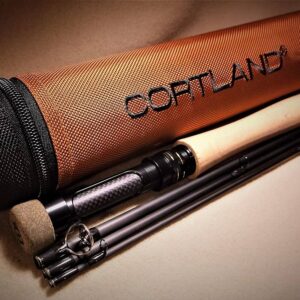Description
When choosing wading boots, consider the type of fishing you’ll be doing sponsored by LLTackleWorldWading boots
are an important piece of equipment for any angler, but it’s important to choose the right type of boot for the type of fishing you’ll be doing. If you’re mostly fishing in rivers and lakes from the shore, a simple pair of rubber-soled boots will suffice. However, if you’re planning on spending more time in drift boats, canoes, or rafts, or fishing in rivers with fast-moving water, you’ll need a more durable boot with a thicker sole. Felt soles are a good choice for many anglers, as they provide good traction and durability. However, they can also pick up dirt and small stones, which can be transferred to rivers and streams and damage delicate ecosystems. For fly fishing in particular, many anglers prefer boots with rubber soles, as they provide better grip and prevent the spread of invasive species. Whatever type of fishing you’re doing, it’s important to choose a boot that will keep you comfortable and safe on your adventures.
Make sure the boots fit well and are comfortable to wear for long periods of time
One of the most important aspects of fly fishing is ensuring your wading boots fit well. Ill-fitting boots can cause a number of problems, including blisters, heel slippage, and discomfort. Furthermore, poorly fitting boots can make it difficult to wade through deep water and support your feet on long days spent on the river. When choosing a pair of fly fishing boots, it is important to select the right size. Most manufacturers provide sizing charts that can help you find the perfect fit. In addition, it is important to choose a boot with the right level of support. If you have any existing foot or ankle problems, it is essential to select a boot that will provide adequate support. With the right pair of fly fishing boots, you can enjoy a comfortable day on the river without having to worry about your feet.
Choosing the right sole for your wading boots
Fly fishing is an enjoyable and challenging sport that is growing in popularity. As more people discover the joys of fly fishing, they often find themselves wondering what kind of wading boots to purchase. There are many different brands and styles of wading boots on the market, but the most important consideration is the sole. The three most common types of soles are rubber, felt, and studded. Rubber soles are the cheapest and lightest option, but they offer little in the way of traction. Felt soles used to be the industry standard, but they are now illegal in many states because they can spread invasive species. Studded soles are a good middle ground between rubber and felt, offering better traction than rubber without the risk of spreading invasives. Carbide and aluminum studs are the two most common options, with Vibram being the most popular soles.
Consider the weight and durability of the wading boot before making your purchase
is a passion for many people. It can be a peaceful way to enjoy nature, and it can also be a great way to get some exercise. One of the most important pieces of gear for fly fishing is the wading boot. Wading boots are designed to protect your feet from the water and from sharp rocks or other objects that you might encounter while standing in the stream. When choosing a wading boot, it is important to consider both the weight and the durability of the boot. A lightweight boot will be easier to walk in, but it might not provide as much protection as a heavier boot. A durable boot will last longer, but it may be more difficult to walk in. Ultimately, the best boot for you will depend on your personal preferences and on the conditions that you expect to encounter while fly fishing.
Which brand of wading boot should you consider?
When it comes to fly fishing, having the right gear is essential. In addition to a good rod and reel, you’ll also need a pair of wading boots that can provide support and traction on slippery surfaces. With so many different brands and models on the market, it can be tough to know where to start. Here’s a look at four of the most popular brands to help you make a decision:
- Simms: Simms is one of the leading manufacturers of fly fishing gear, and their wading boots are among the best in the business. They offer a wide range of styles and sizes to suit any fisherman, and their boots are built to last.
- Korkers: Korkers is another top choice for fly fishermen, offering support and stability on wet or dry surfaces. Their boots are also sizing-friendly, meaning that you’re more likely to find a pair that fits just right.
- Redington: Redington is a great option if you’re looking for value. Their boots are affordable without sacrificing quality, and they offer a variety of styles to choose from.
- Orvis: Orvis is one of the most well-known names in fly fishing, and their wading boots are some of the most popular on the market. They offer both budget-friendly and high-end options, so there’s something for everyone.
No matter which brand you choose, make sure to try on different styles and sizes before making your final decision. That way, you can be sure you’re getting the perfect fit for your feet.










Reviews
There are no reviews yet.